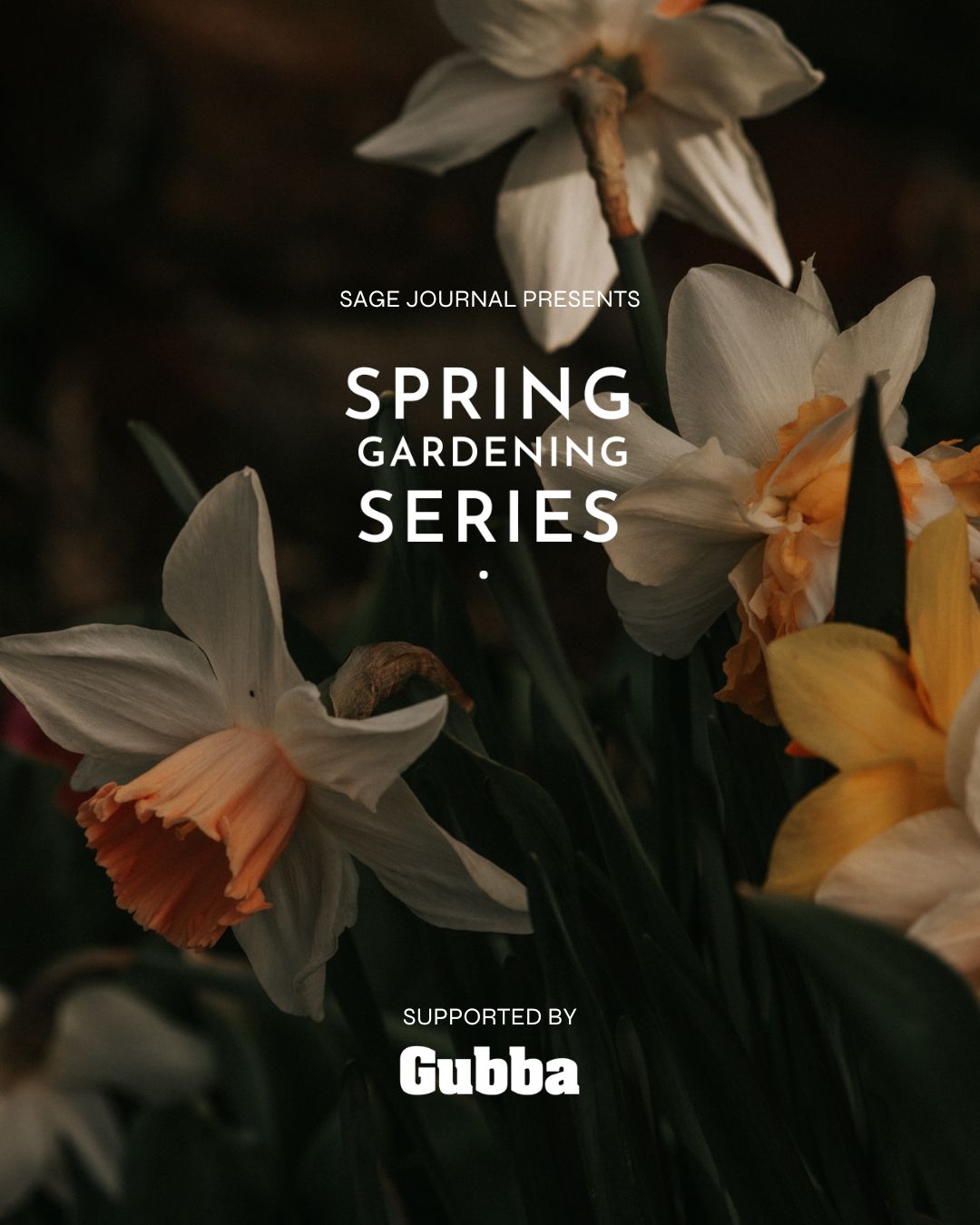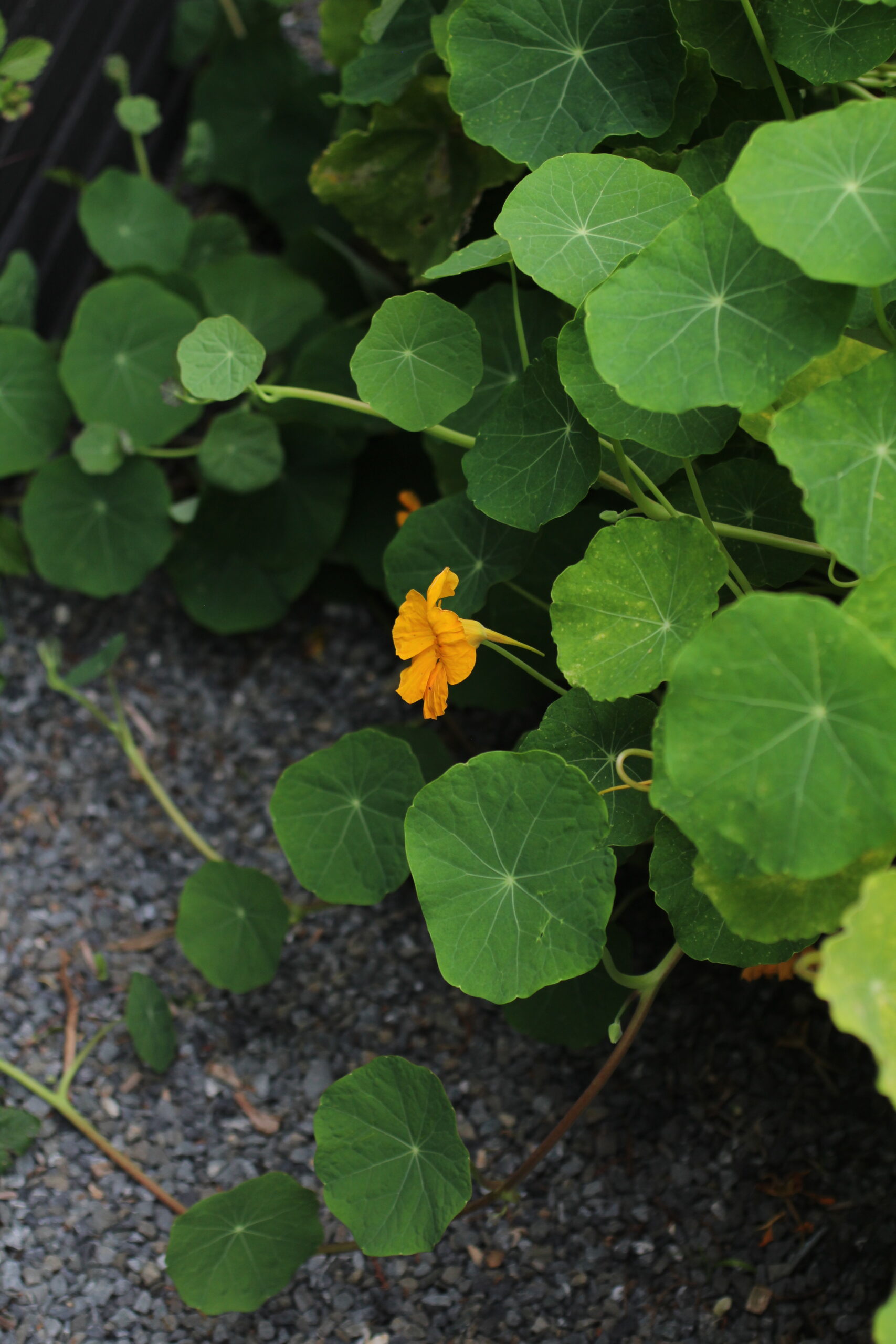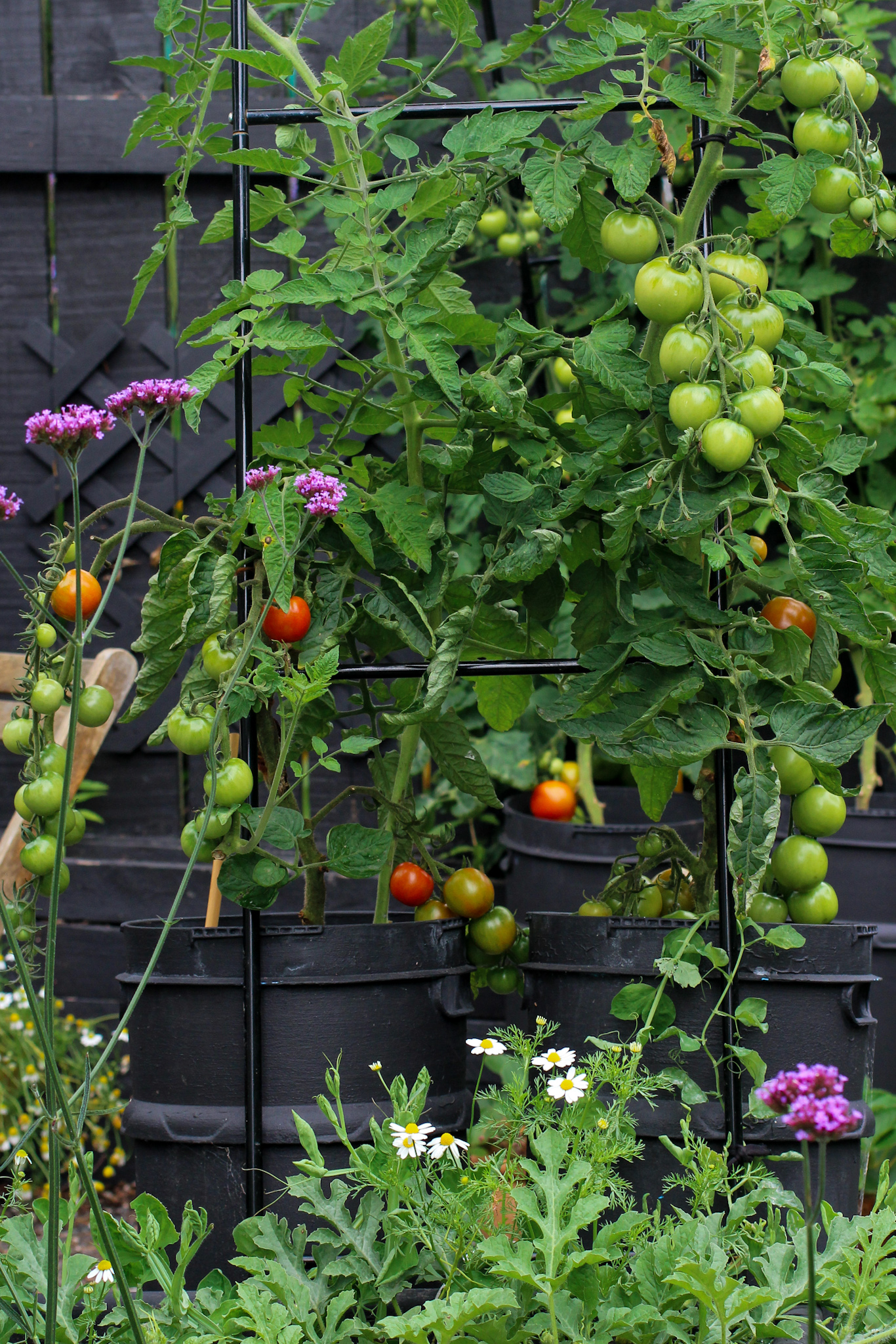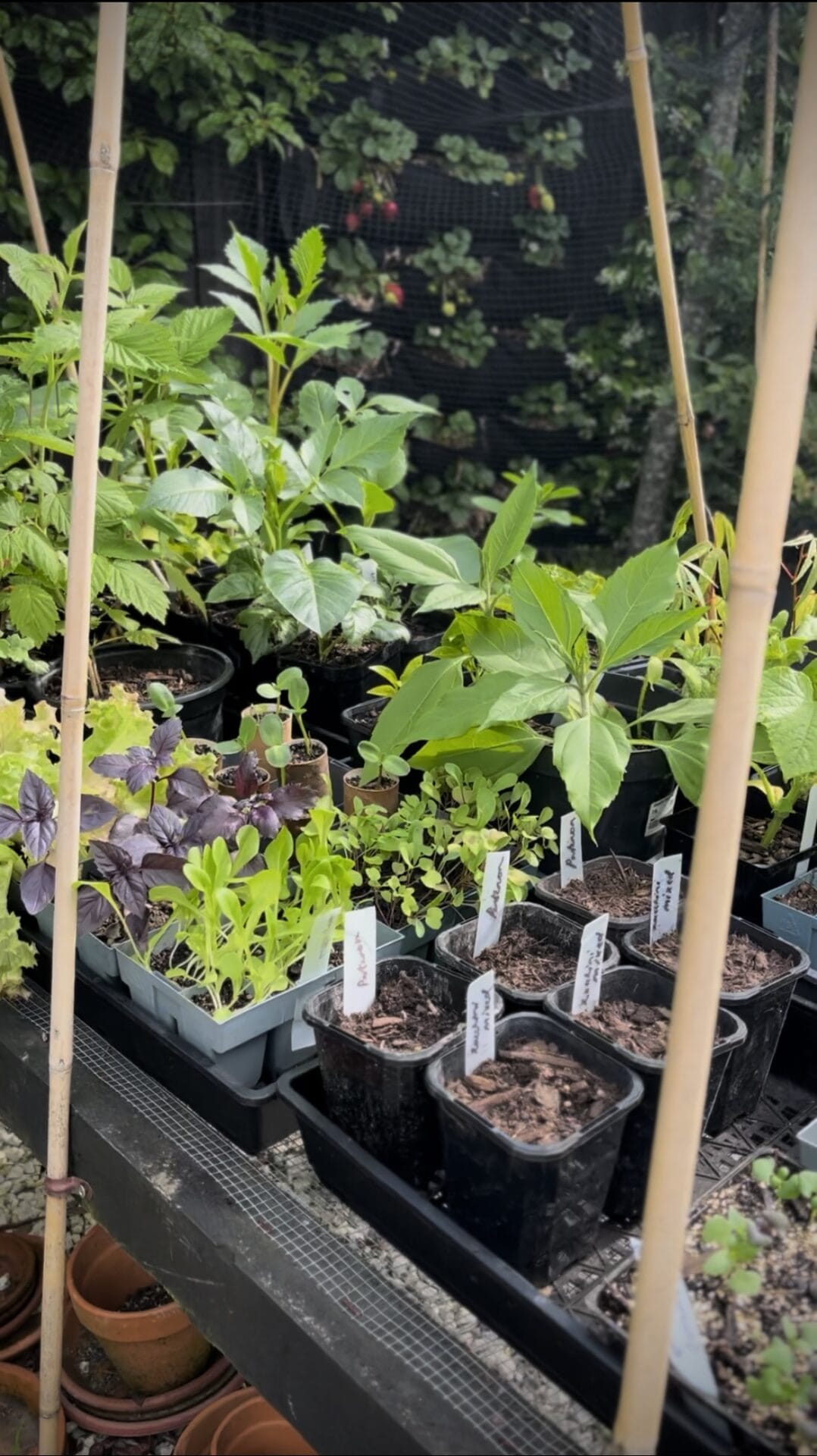Your cart is currently empty!
A guide for spring disease prevention & management | What to do about powdery mildew, rust & black spot

A guide for spring disease prevention & management | What to do about powdery mildew, rust & black spot
The essential guide to managing and preventing disease in the garden during spring. Written by Elly Keen (@daydream.green)
The 2025 Spring Gardening Series is supported by Gubba Garden Store.
Spring is renowned for wild weather – one minute the sun is beating down, then the next you are being lashed by wind and rain. The combination of rain and moisture, mixed with warmth and high humidity, is the ultimate recipe for fungal disease which is a common problem in our gardens this time of year.
It’s not possible to eliminate all plant diseases from our gardens, but it’s wise to be aware of these issues and to get on top of them early to manage the damage they can cause to our precious crops.
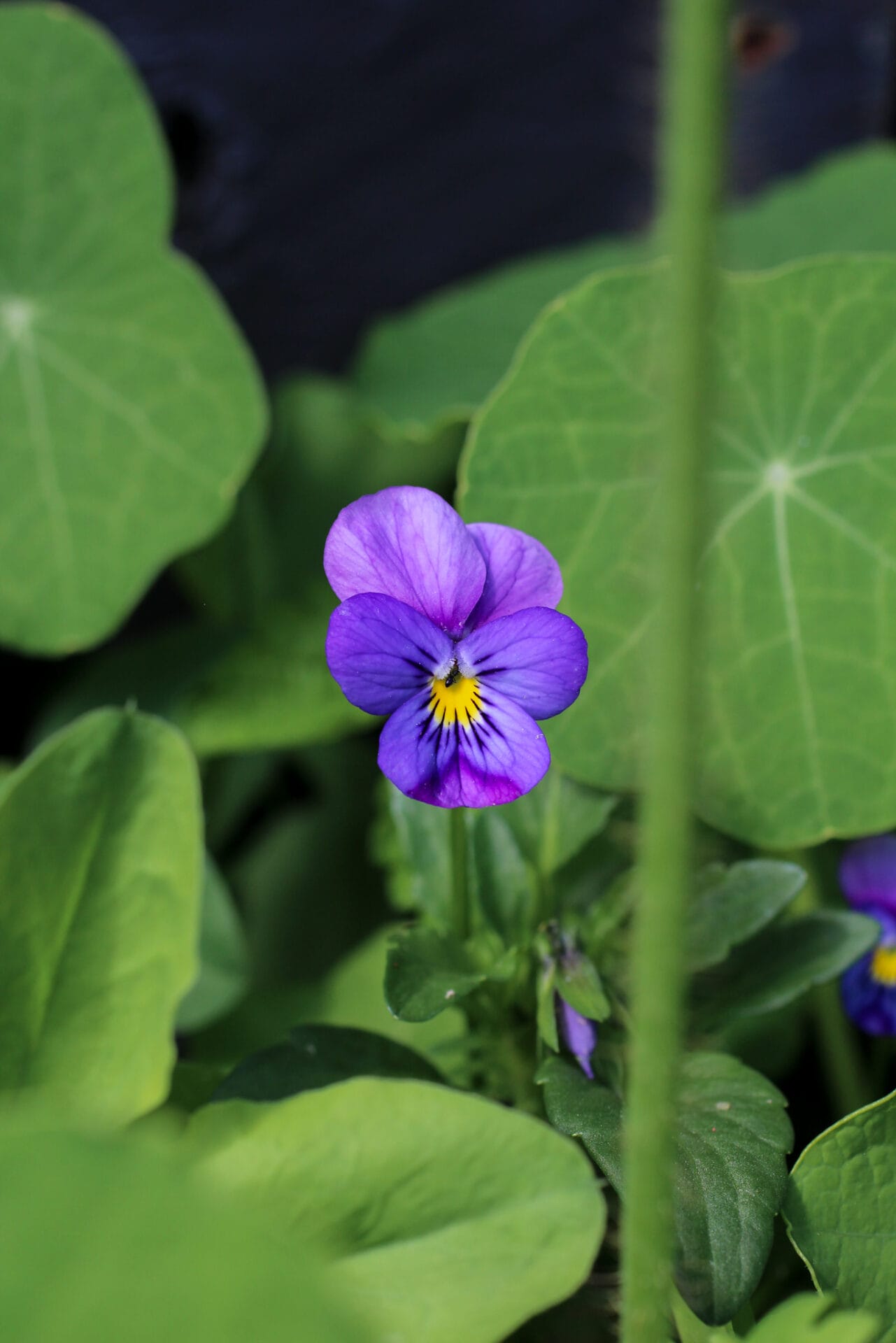

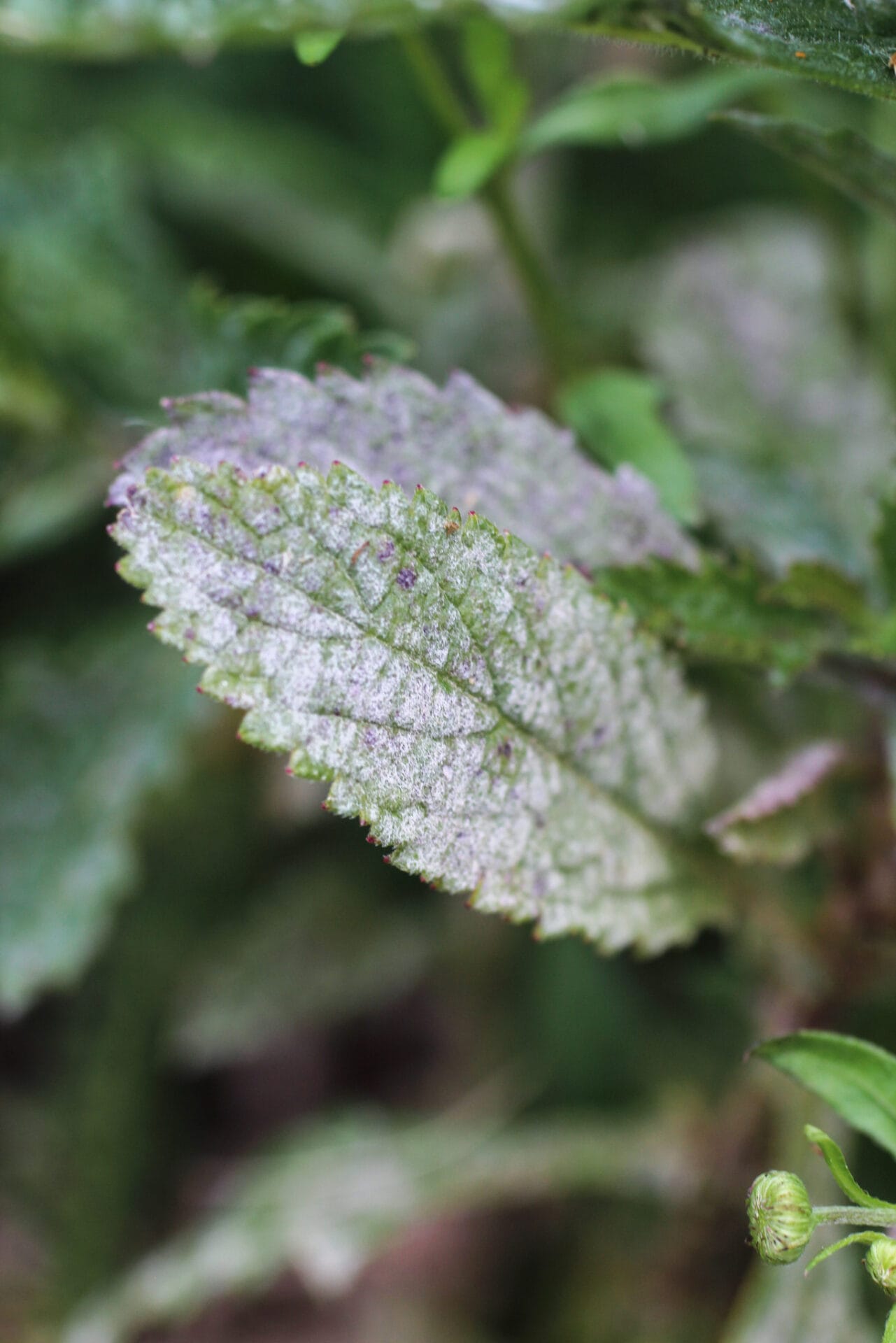

Powdery mildew
Powdery mildew is a common fungal disease that produces a white, powdery film on the leaves, stems and flowers of plants. Spores of the fungus are dispersed through wind, during times of dry warmth and high humidity. Powdery mildew is not the most fatal disease for plants, but it is unsightly and eventually will prevent the plant from being able to photosynthesise if the disease is left uncontrolled.
There are a wide array of plants that are susceptible to powdery mildew, including flowers like ranunculus, sweet peas and dahlias. Vegetable crops within the family of legumes, brassicas and cucurbits are worst affected. The best prevention for powdery mildew is air circulation. It’s important to stick to the recommended spacing between plants.
If you notice any powdery mildew on your plants, quick action is needed to control the spread. Remove any affected leaves and move them to the compost bin.
Bi-carb spray for powdery mildew
Powdery mildew is usually caused by lack of airflow and dry heat, but can be prevented with a homemade bi-carbonate spray.
A preventative organic spray of dishwashing liquid, vegetable oil and baking soda can be made up to protect leaves, but will need to be applied regularly to be effective. Try using a garden sprayer to make this job easier – Solo Sprayers (available from Gubba) are designed to connect to your garden hose so there is no mixing or measuring required.
Generously spraying with a homemade bi-carbonate spray once a week gives them a good chance for prevention.
How to make bi-carbonate spray for powdery mildew:
1. You will need good quality biodegradable liquid soap or dishwashing liquid, vegetable oil and bicarbonate of soda (baking soda).
2. Take a bowl and mix one teaspoon of bicarbonate of soda with 1 litre of warm water. Mix until dissolved.
3. Add one teaspoon of organic vegetable oil.
4. Add one teaspoon of biodegradable soap (like Dr Bronner’s Magic Liquid Soap).
5. Mix all the ingredients together and pour into a spray bottle.
Avoid spraying in the heat of the day as the oil in the spray means the sun could burn the leaves. It will need to be applied weekly to be effective, or after rain. Some plants can be sensitive, so it is always best to spray a small area first to check for signs of leaf damage.
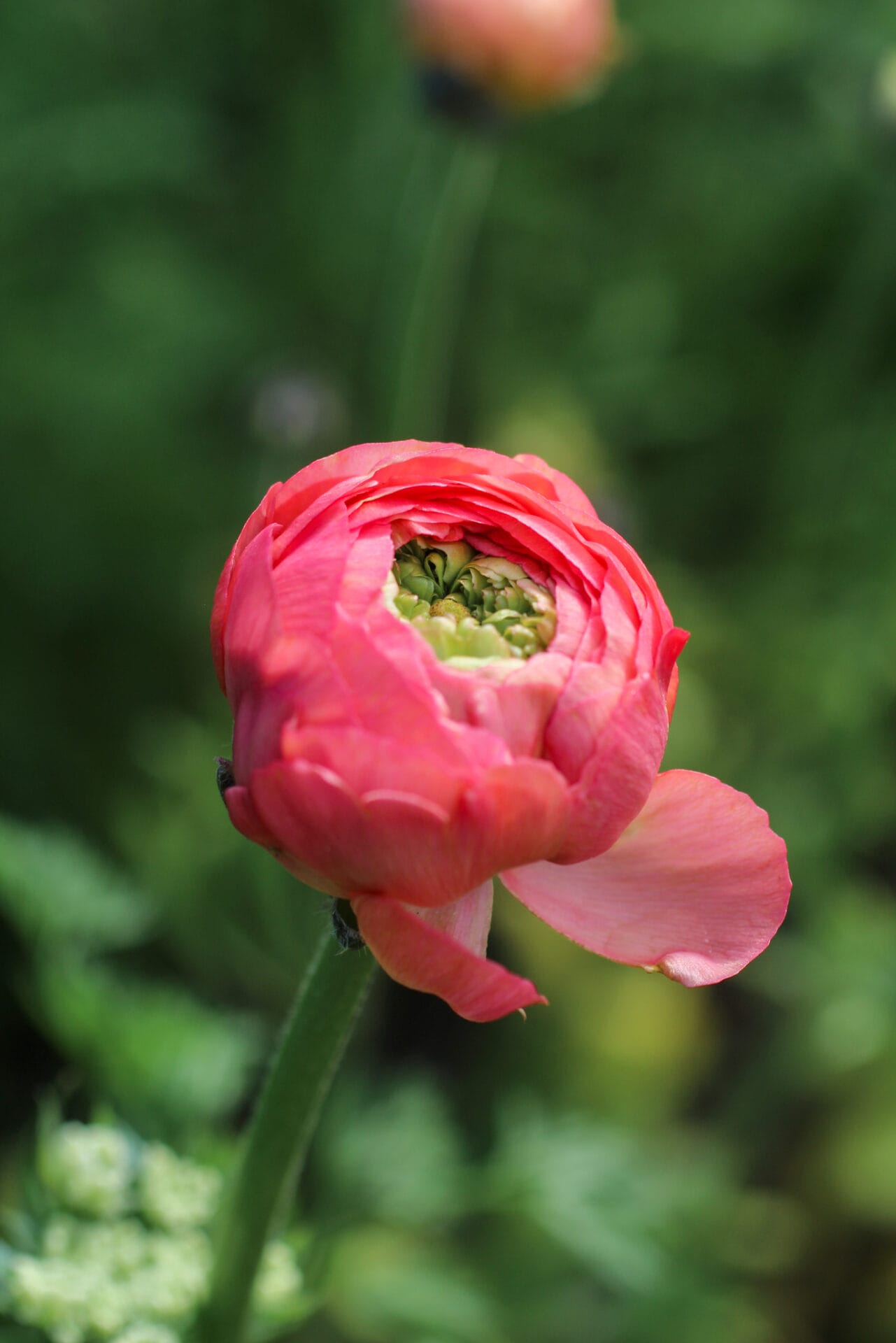
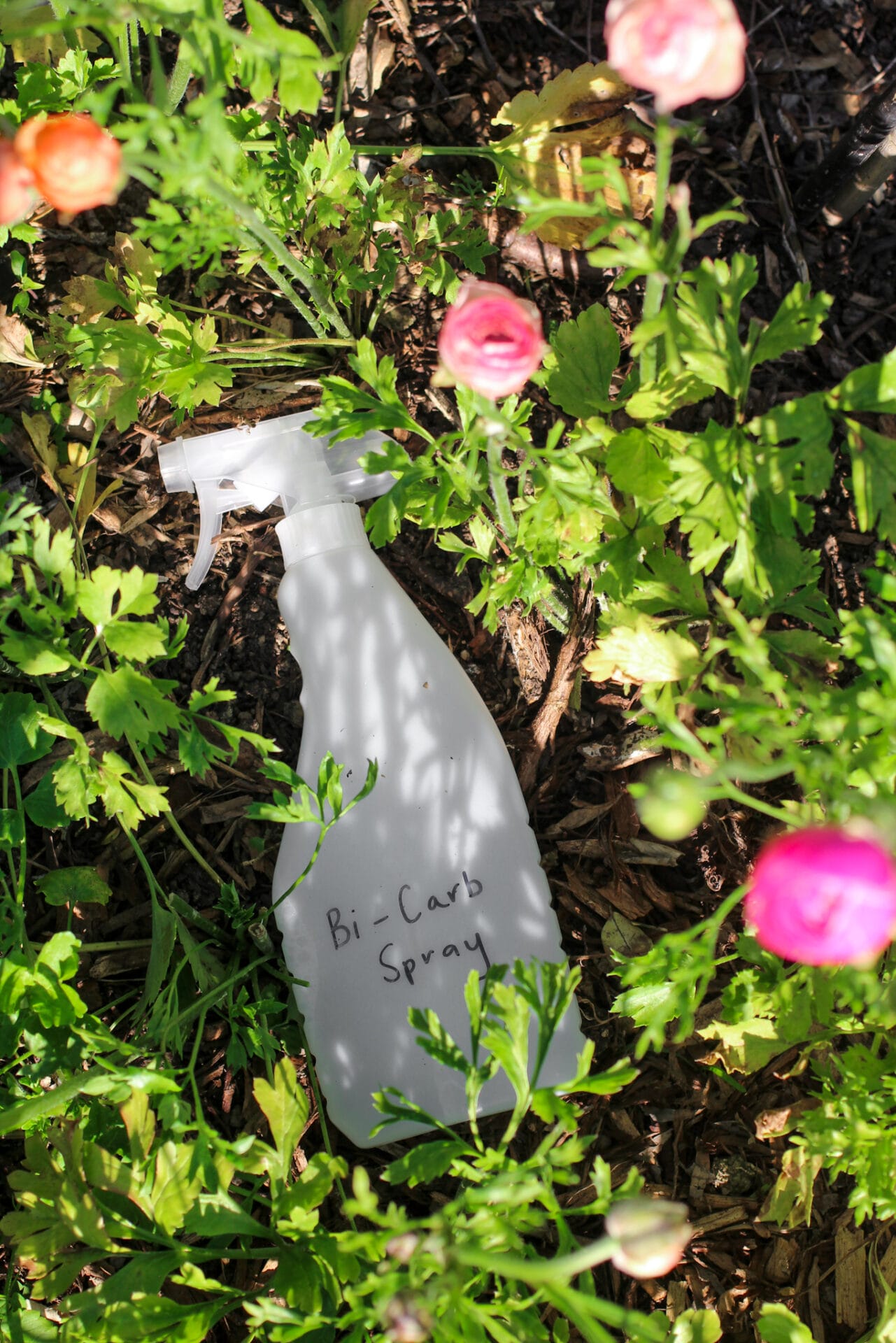
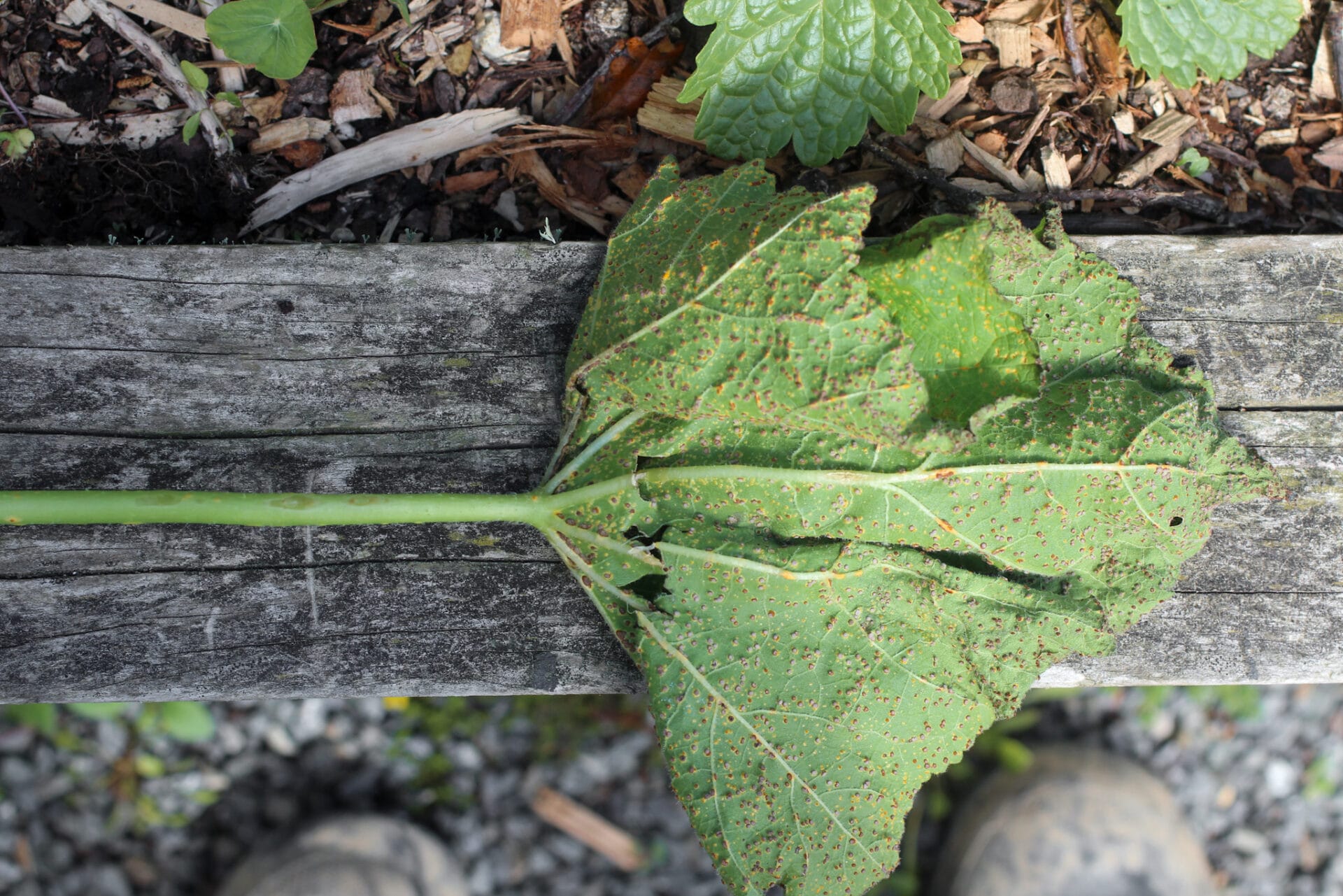
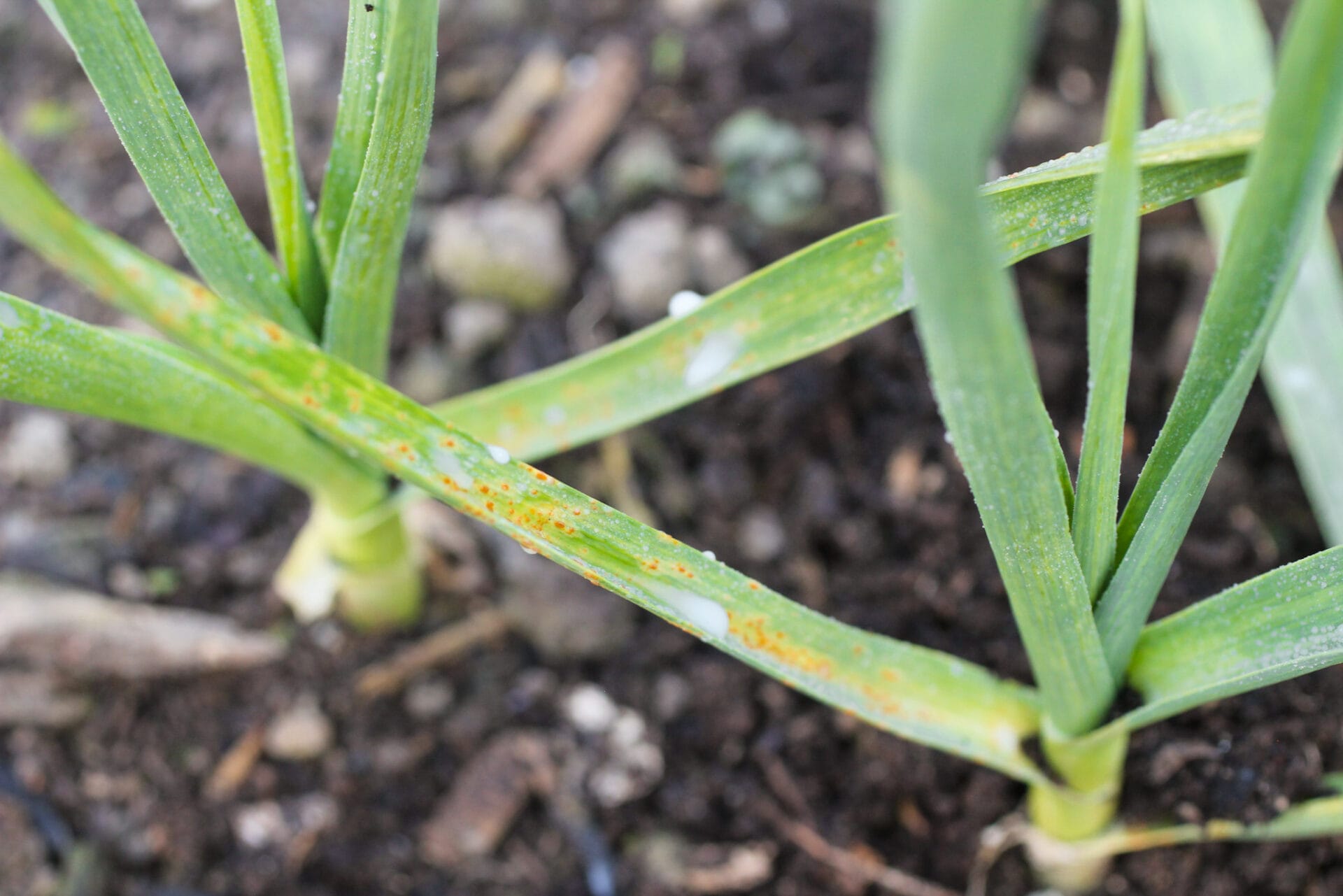
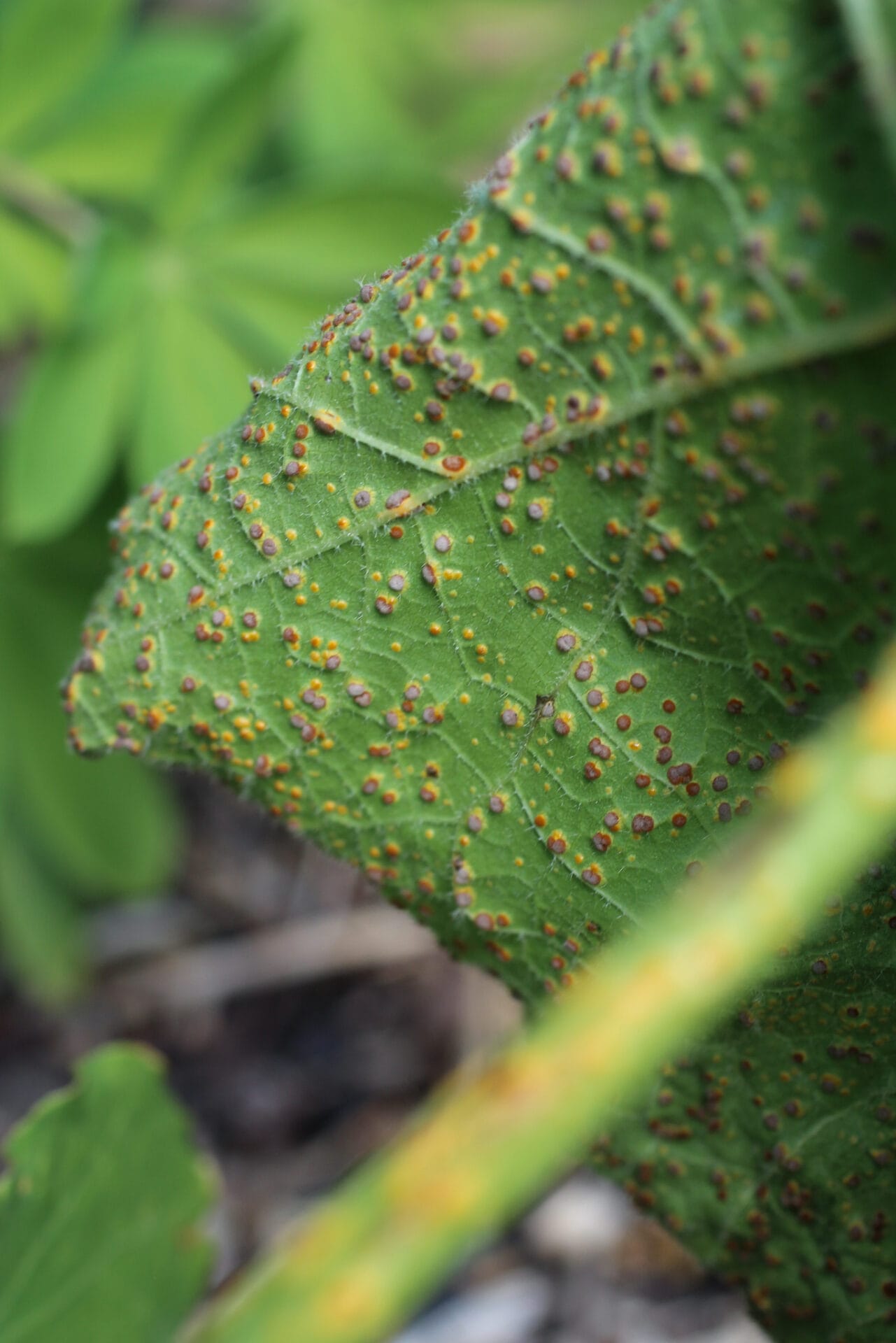
Rust
When a plant is suffering from rust, you will notice reddish, yellow-brown spots covering the stems and leaves. This is another fungal disease that is spread by airborne spores, especially in warm, moist conditions. Rust will eventually cause leaves to go yellow, shrivel and fall off which leads to poor growth and small bulbs on vegetables (albeit still edible!).
The allium family is particularly vulnerable to rust attack – think garlic, onions and leeks. Also flowers like roses, snapdragons and hollyhocks are known sufferers.
To prevent rust, you can plant rust-resistant varieties, keep topping up with fresh mulch to avoid splash-back from the rain and snip off any signs of rust when possible.
Milk tea for garlic rust
A homemade milk tea can combat this common fungal problem by generously pouring 1 part milk to 5 parts water over your garlic foliage once a week. The milk has anti-fungal properties that will help to prevent rust from setting in.
–
Finally, keeping your plants and soil healthy with organic ingredients like seaweed, fish emulsions and worm tea will help them fight off the fungi spores. EMNZ products like Healthy Soil + is a handy, all-in-one product containing fish, seaweed and thousands of species of microbes. This potent elixir is a secret weapon for disease protection by injecting powerful microbes into the soil which are the key to digesting organic matter, like fungi spores before they reach the plants and thus improving overall soil health.
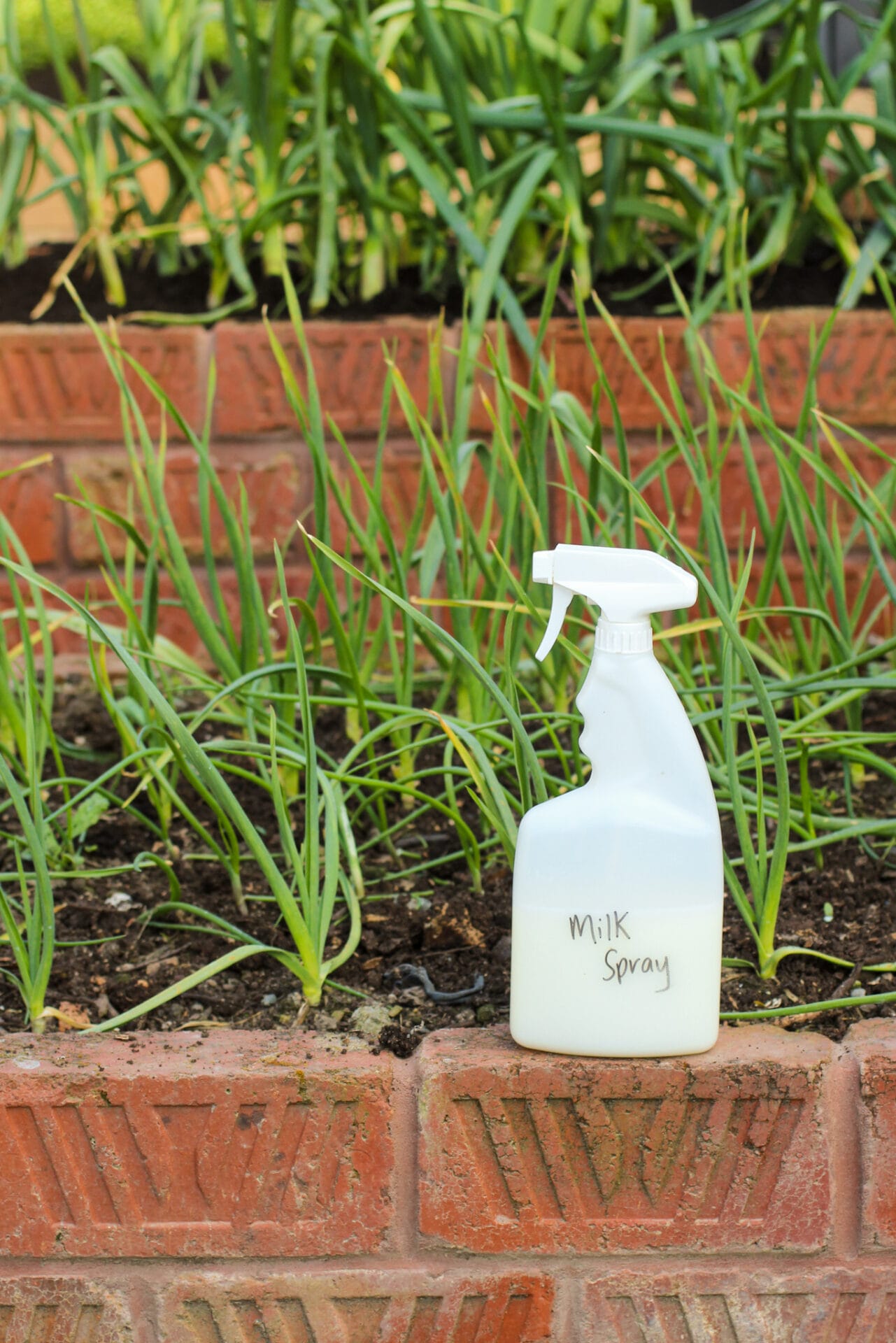
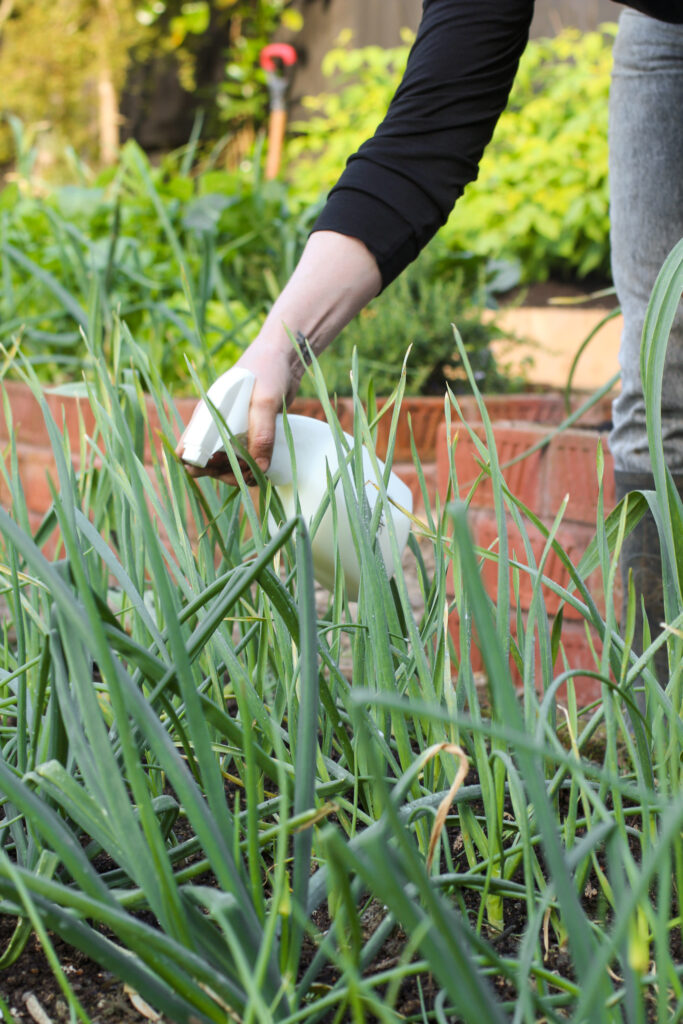
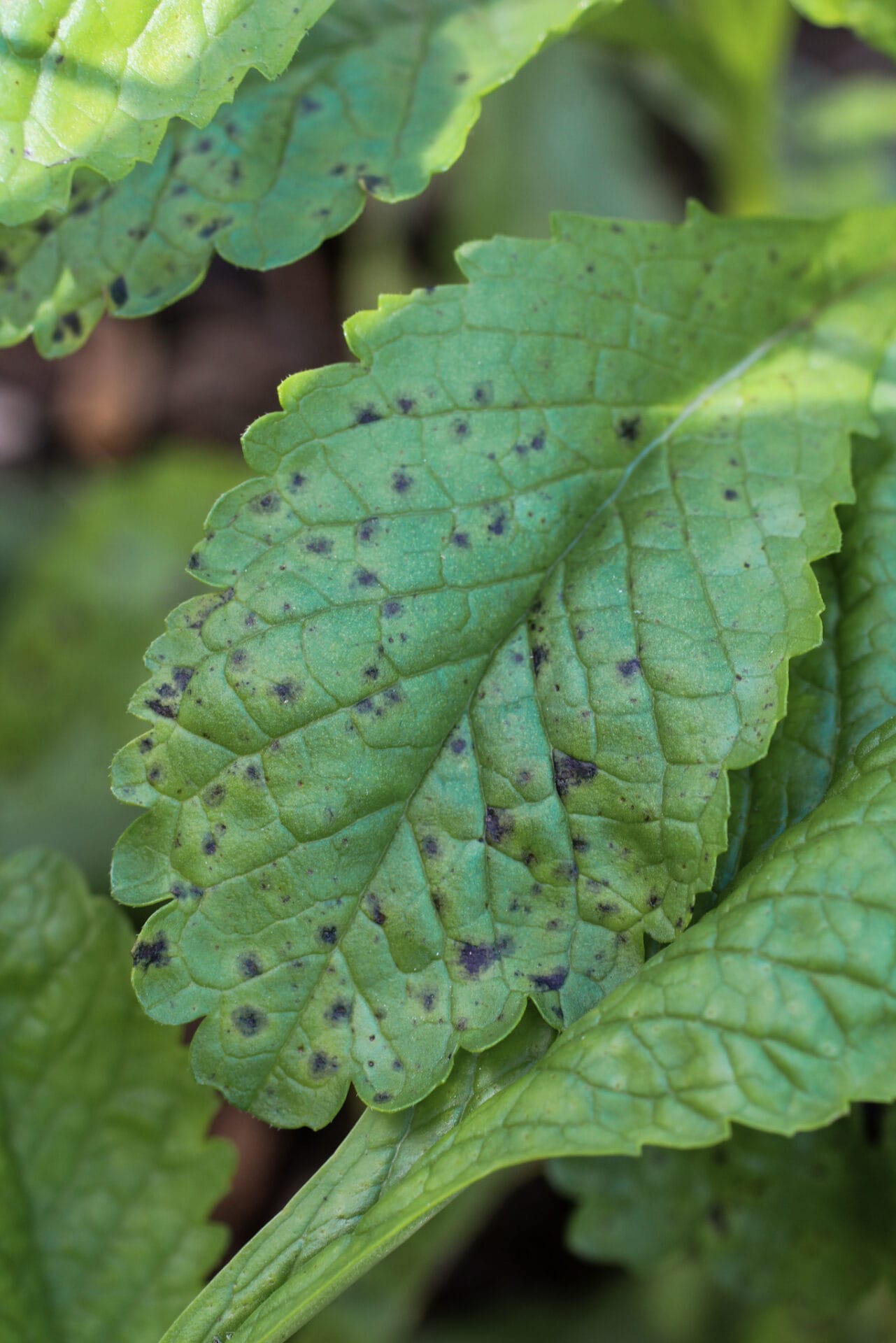
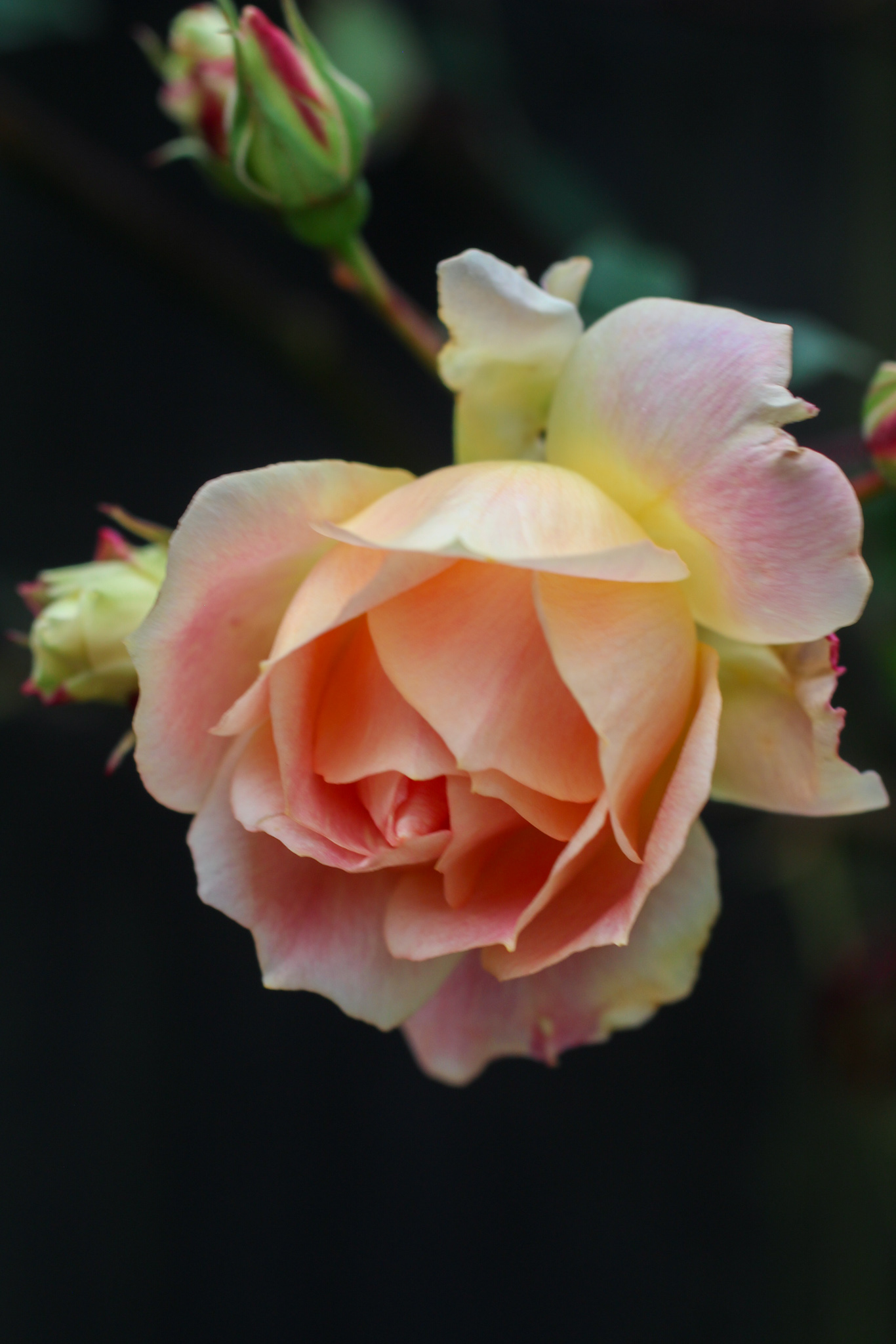
Black spot
Black spot is a fungal disease that thrives in wet, humid conditions. The spores are caused by water splashing up from infected soil. Plants suffering from black spot have dark circles with a yellow edge on the leaves. The leaves will eventually wither and die.
Roses are the most well-known plants to suffer from black spots, which make the leaves unattractive and drop early. Fruit trees are also vulnerable. Black spot on young trees is especially a concern as it can spread to the fruit quickly.
The best prevention method for black spot is clearing away debris from underneath plants, and using wool mats which absorb water and stop splash-back. When watering, avoid getting the leaves wet – instead, aim the hose or watering can at the base of the plant. Remove any leaves that show signs of black spot and try using organic sprays made from neem oil, such as Grosafe Bioneem.
––
Crop rotation
Another way to prevent disease in the garden is by rotating your crops. This is especially important for vegetables and flowers that are prone to disease. Spores can lay dormant in soil for several seasons, waiting for a suitable host to return. Alliums and snapdragons are examples of plants that suffer from rust. To break the cycle, you should avoid replanting in the same bed for up to 3 years.
Following infection, try planting a cover crop to help ‘cleanse’ the soil and apply a microbial soil conditioner like Seacliff’s Organic Microbe Pro to restore balance and outcompete lingering fungal spores.
Another tip is to gently allow the sun to penetrate the soil for a season if possible as disease like rust thrives in damp, stagnant soils. To do this, avoid planting subsequent crops too densely and mulch with a light material, like a leaf mold to encourage breathing while still protecting the soil from erosion.
Plant diversity
Another way to prevent disease from taking hold in your garden is to mix up your crops and avoid monoplanting. Tidy rows may be visually pleasing, but this also helps the easy transfer of disease from plant to plant.
Instead, try grouping plants by variety in multiple different areas of the garden, and interplant with companion herbs such as oregano, thyme and lavender to act as natural, anti-fungal barriers between your key edible or ornamental crops. This method will ensure that if one small group is affected by disease, there is a chance of saving the rest through safe distance.
––
Dealing with fungal diseases such as powdery mildew, rust and black spot can feel overwhelming at times, especially if the disease gets out of hand. The best way to maintain a healthy and productive spring garden is to focus on prevention first and foremost.
While these diseases are often triggered by the unpredictable weather conditions of the season – warmth, humidity and moisture – there are practical ways to lessen their damage. By ensuring proper air circulation, maintaining good garden hygiene and using organic preventative sprays, you can significantly reduce the risk of infection.
Though it’s impossible to completely eliminate fungal diseases, early detection and proper action will help protect your plants, keeping your garden thriving throughout the growing seasons ahead.
––


